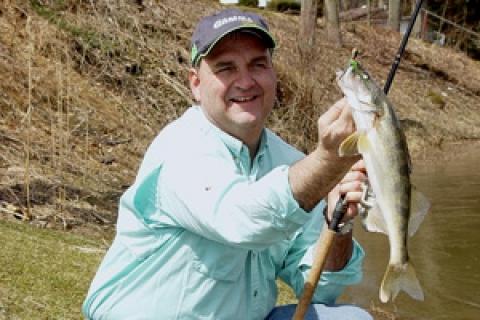
 Rock bars and sandbar, typically formed where a feeder creek joins a medium- to large-sized river, draw walleyes year 'round, but especially during the early spring. These locations often provide food, warmer water and suitable spawning habitat. Due to their location, they often provide one of the best options for shore-bound anglers.
Rock bars and sandbar, typically formed where a feeder creek joins a medium- to large-sized river, draw walleyes year 'round, but especially during the early spring. These locations often provide food, warmer water and suitable spawning habitat. Due to their location, they often provide one of the best options for shore-bound anglers.
River and weather conditions play a significant role in how productive a rock bar will be. Higher flows push walleyes out of mid-river areas, resulting in greater numbers of fish in below-the-rock bar eddies. Bluebird weather generally means a late day feeding rush. Stained water conditions or a cloudy/lightly rainy day may offset this to a degree, but the smart money is cast on the last hour witching-hour bite, which sometimes continues into the darkness.
In most instances rock bars are sickle-shaped, with the end of the formation curving downriver. A vertical current line is formed in conjunction with the tip of the bar, the demarcation between the river's main current and the protected waters tucked in behind. This line provides visual evidence of the corridor walleyes use as they move from deep to shallow to eat.
Rock bars can be fished either from the exposed portion of the spot or by wading out onto it, depending on the flow. Using the current line as a point of reference, with a 6 1/2 -foot medium-action spinning outfit cast a bucktail jig tipped with a three-inch Gulp! Alive! minnow downriver along the seam. Be alert for a tell-tale tick on the initial fall; then begin a nine-to-eleven o'clock sweep/drop jigging retrieve. Get a bite when the rod tip is low, simply snap the hook home. When the rod tip is up, drop it, reel down, then set hooks.
As walleyes move up, there almost always is a "sweet spot" — that little pocket where the biters are hanging. Change casting positions, and also fancast at various angles along the seam until you discover that spot.
- 2200 views

